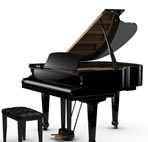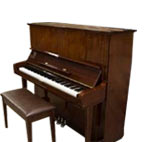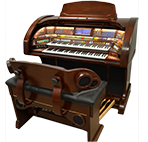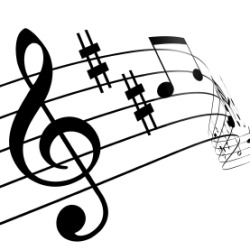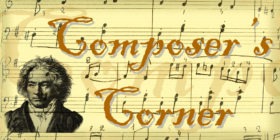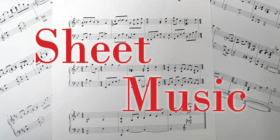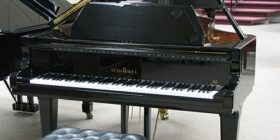Piano lesson myths are so ingrained into our culture and our consciousness that it almost seems silly to counter them. But on close examination, even the most “obvious” beliefs about piano study and piano practice are not only wrong, they are damaging to the individual who is bound by their chains. This piece aims to help pianists of all levels be liberated from such mental constraints and assumptions regarding piano lessons so that they might reach their goals. We hope you find our explanations and piano practice tips helpful. Share your thoughts in the comments and be sure to check out part two of Piano Myths!
“My teacher will drop me if I make a lot of mistakes.”
Reality: Most teachers enjoy teaching and are inspired when they see someone who really tries and is diligent with their practice. In fact, good teachers PREFER to witness your mistakes so they can help you not only fix the problem, but learn how to avoid the problem in the future. This could be in the realms of practicing suggestions, fingering, hand position, eye movements and more. If you have latent mistakes that you somehow are able to hide for the lesson, the teacher may not be able to help you fix these hidden problems, which means that they may appear later when you are performing. Also, fear of making mistakes tends to distract you from the music and will actually CAUSE the very mistakes you were trying to avoid! So, never be afraid to make mistakes for your teacher.
“I have to study classical music before I can play pop or jazz.”
Reality: If a student’s ultimate goal is to play popular music, or even to do it with classical on an equal footing, this idea that you must study classical music first is incorrect. In fact, even if one’s goal is to focus strictly on classical literature, there is great value in studying popular chord technique and improvisation. The best way to study music theory is through POPULAR music! This is because chords are presented in a straightforward manner, as chord symbols, without even having to read music! (These are sometimes called “guitar chords” and are printed above the music staff.) Theory knowledge can make you a better performer, a better sight-reader, a better memorizer, a better interpreter and a better overall musician! And, of course, these attributes are applicable to playing classical music. The easiest way to start a path towards music theory is to study popular music, with a teacher who knows how to explain chord-reading (not notation). So, one could study classical first and then popular, but considering that these are different skills that take time to master, why not do them concurrently? To avoid popular music till classical music is mastered will make it much harder to learn music theory and in turn to derive the benefits of this knowledge.
“Children learn faster than adults.”
Realty: There is no difference. From my own personal experience of teaching both children and adults since 1975, this idea that a child’s brain is more receptive is incorrect. What may be true is that the child is less encumbered by the busy-ness of life and tends to have less mental clutter. This state results in a naturally-better focusing ability which creates the illusion that the child may be able to absorb new material faster than the adult. However, what the child often doesn’t have is desire. The adult really wants to study piano. And this great desire creates the same type of focus that is needed for quick learning. In fact, adults who have this intention, often from wanting to make up “for lost time,” often learn faster than children! The adult who is just a dabbler who doesn’t have the great desire is a typical hectic, frazzled adult. This type of adult is the adult who will tend to learn slower — not because they don’t practice enough, but because their energy is so distracted. Another cause of distraction is self-judgement and stress and impatience that is associated with learning. Adults have had their lifetimes to become familiar with music so they know how it is “supposed” to sound, whereas children usually have never heard the piece they are learning. As a result, adults do tend to become easily frustrated by comparing their current ability to play a piece with the way they know it should sound — and THIS comparison can cause enough stress and anxiety that the adult student will often lose interest or stop playing altogether. So adult students need to take caution about this unnecessary temptation to think they “should” sound like a professional pianist after only playing for three weeks. The adult student must learn to embrace his or her current ability with grace and appreciation. From this point improvement will occur.
“Since I didn’t begin studying piano as a child it I’ll never be able to play well as an adult.”
Reality: It’s never too late. Early neural stimulation as a child DOES help with musical intelligence as an adult, but it need not be from the piano. For example, kids who are great at sports or gymnastics or dance are often the best at piano, when they eventually try it. That’s not a surprise to most people. But what is a surprise is that adults show the same parallel! An adult who had been athletic as a child will find it easier to learn piano as an adult, because the advanced neurological stimulation lasts one’s whole life. It is simply a new application. If you’re had a nurturing, stimulating environment as a child, you will definitely have an advantage when you begin piano studies as an adult. If you had limited exposure to physical experiences as a child, this would tend to make it more difficult to learn the piano whether you are a child or an adult.
“I should study finger technique before playing actual music.”
Reality: Is physical technique and accuracy more important than interpretation and expression? No. Does physical technique and accuracy take more time to master than interpretation and expression? No. It’s like comparing apples and oranges, but both require a lot of time. The best way to develop interpretation and expression is through the repertoire. In some countries, it is common to have a student just do drills for 5 years before they are allowed to play any music. Then the student is allowed to play repertoire. It’s no surprise that these performers play accurately and fast, with very little expression. The best thing to do is to study music along with finger technique. Ideally, the difficulty of the technique level should always be slightly ahead of the requirements of the repertoire.
“I must practice every day.”
Reality: Taking two or three guilt-free days off from practicing each week will help you progress faster than if you practiced everyday! Think body building. People who work out or who lift weights are always told to rest the day after a workout. Why? Because the workout tears down the muscle tissue and the day off is when it is rejuvenated and built up stronger than before. Our brains are similar to this. The rest periods are when your brain assimilates your effort. Also, the reason it must be guilt-free is so that you get the complete benefit of the day of rest. If you intend to practice seven days a week and you miss a day, you will be inclined to be stressed about it during the inadvertent day off. So instead of relaxing from the piano on that day, you are more stressed. In fact, with this more typical approach, you may be inclined to practice more the next day with the hopes of “making up” for the missed day. This approach never works. You can’t cram the piano. All you will get is more and more errors and more and more frustrated because your poor brain is never given a rest it desperately needs. For best results, just practice only 4 days a week. This allows you to plan-in 3 days a week of guilt-free rest. (These days do not have to be in a row.) This is realistic and supportive because things often come up for us in our busy lives anyway. By making 4 days a week 100% of the requirement, if you do more, you feel great.
“Long sessions of practice time are best.”
Reality: Shorter times are optimal. After about 15 minutes of an activity, the average person becomes mentally fatigued. Short bursts of concentration repeated frequently are much more effective than one long session. So, even if you only have 10 minutes, DO IT. Do another 10 minutes later in the day or the next day. By the end of the week, you might have 16 micro practice sessions, yet only practiced on 4 days. This is highly efficient. Instead, if you have the goal of practicing an hour or practicing a half hour, another day goes by with ZERO practice. Why is this? Because our life gets so busy and that half hour or hour just doesn’t materialize. The result is that you miss practicing ALTOGETHER. If you could sneak in five minutes here or 10 minutes there, you would miraculously accrue that half hour or hour that you had intended to practice! In fact, even if you had the luxury of sitting for six hours at the piano and didn’t have other typical competing issues that life brings, it would STILL be preferable to break up your practice into smaller segments. Also, do not practice if you are tired, angry, distracted, or in a hurry or you will “learn-in” these feelings. On a professional level, if you find yourself seated at the piano for an extended period of time, you can still observe these principles by rotating the activity while still remaining at the piano. For example, you can spend 20 minutes learning a new passage of one piece. Then switch to practicing some finger technique. This way, your mind is resting while your fingers are getting a workout. Then GO BACK to the same passage and you will be mentally refreshed. Then work on a section of a different piece. Then do a little sight-reading. Then back to the first piece. And so on. Keep it in rotation.
“If I take a break from piano practice, I’ll have to work harder to make up for lost time.”
Reality: Piano growth cannot be “crammed” like studying for a test. Piano growth occurs primarily from the cumulative time spent practicing, even if this is sporadic. So if you work for six months and then take off three months and then practice for four months and then take off two months, it is tempting to add up all those months, including the time off, and feel that you should have improved a total of 15 months’ worth of progress. But you really only have ten months of actual growth. Then the average person is tempted to feel inadequate and that they have to work extra hard to make up for the “lost” time. Instead, it’s better to think of this in the way a plant grows. You can give it sunlight, water and fertilizer, but you cannot be yelling at it “grow!” It will grow on its own time line. You cannot rush it. Your piano growth pretty much stops when you’re not practicing for two months or for two years, or for two decades. When you take it up again, you may have a short period of review but you will pretty much be back to where you had left off and then you will progress from that point. If you can remove the pressure of having some kind of deadline to “make up for the lost time,” your attitude towards the piano will be so much better and you will have so much more enjoyment!
“Reading finger numbers is just for beginners.”
Reality: Professionals incorporate the fingering into their ability to read music. They read both the PRINTED fingering, the IMPLIED fingering, and their PERSONALIZED fingering. In fact, it is FASTER to read using a RELATIVE understanding of how the notes move from one to another than merely reading the ABSOLUTE note names. In order to do this, one must be keenly aware of the fingers to be used on a passage. For example, if you see that a passage starts on an “A” and then ascends by step via line-space-line-space-line-space, then you can assume that the notes are moving directly up the scale. It is not necessary to read the actual name of each note. A professional musician will know this and not waste his or her brain power on trying to “read” every note. Simply read the first note of a sequence and then relatively move to each note from there, by using adjacent fingers. This skill is developed from honoring the fingering (printed, implied and personalized.) Beginners who assume that fingering is just for beginners will NEVER develop the very professional security and speed that professionals have because the very thing that is needed will have been skipped!
“I should never write in the sheet music.”
Reality: Professional studio musicians write in the score. They are paid to get it right the first time, because time is money. They do everything they can to make it clear for themselves, including making notes in the score. This could be adding fingering, putting note-names in, circling tricky passages, enlarging time signatures, darkening repeat bars, etc. Because we all grew up with the dictum: “Do not write in books,” we somehow have a tendency to apply this to piano music. But if you could think of your piano music more as a workbook (like a “spelling book”) then it would seem more normal to write in the book. Some people don’t want to write in the score because they fear that it would prevent them from learning how to read the notes. This is so misguided! Of course it is useful to learn how to sight-read. In fact, you should be using Super Sight Reading Secrets if you are very serious about improving your sight-reading. BUT… when you are working on a piece, the goal is to play it well. This means that you should use consistent fingering so the muscle memory has a chance to set in. The only way to do this is to WRITE THE FINGERING INTO THE SCORE! By the way, as a piano teacher since 1975, I can tell you that students who don’t write in the notes on tricky sections, RARELY end up being better at reading those notes! They simply “learn-in” a pause or a stall or a ritard when they get to this “unreadable” section. Don’t go too far, however. If you write every note in, or every finger in, it becomes too cluttered and it loses its value. Also, use pencil, never pen, in case you want to make changes to your notations.


